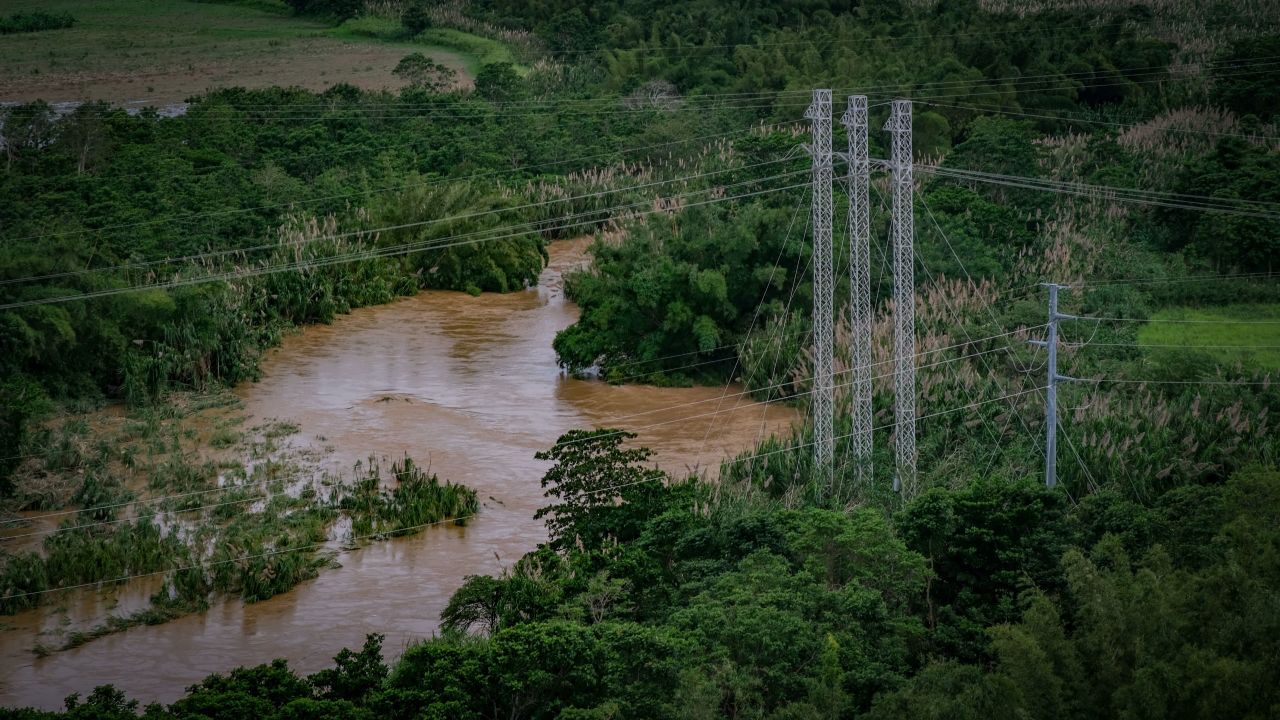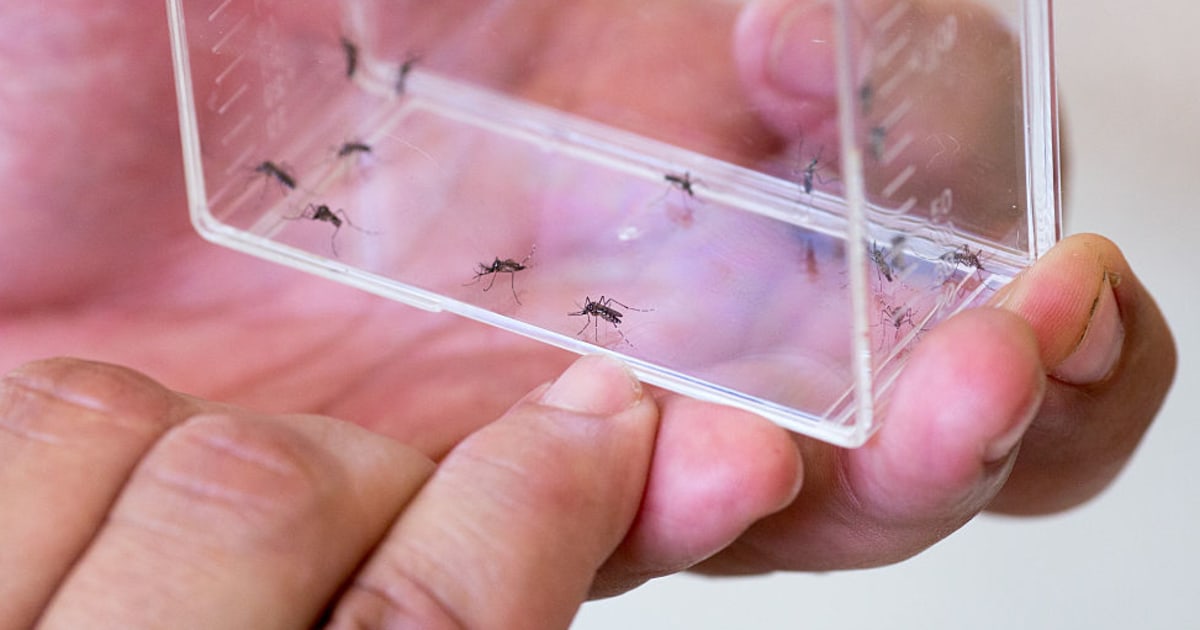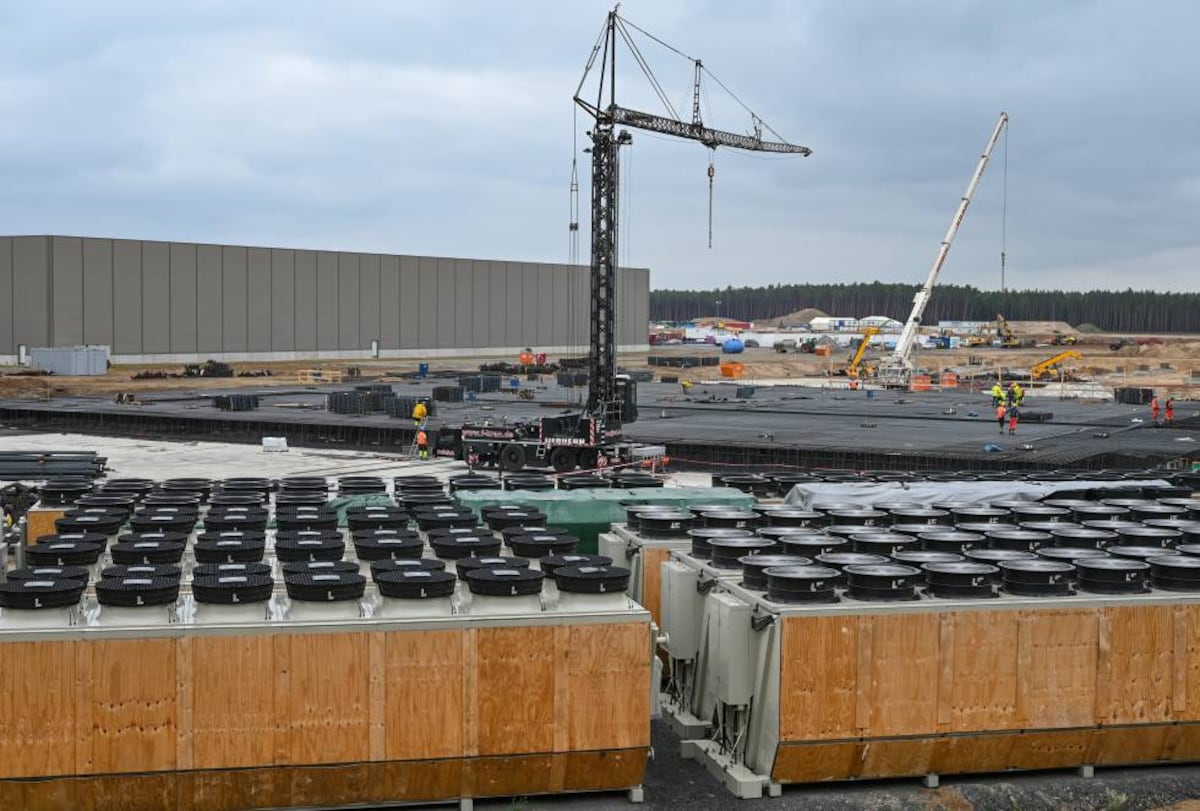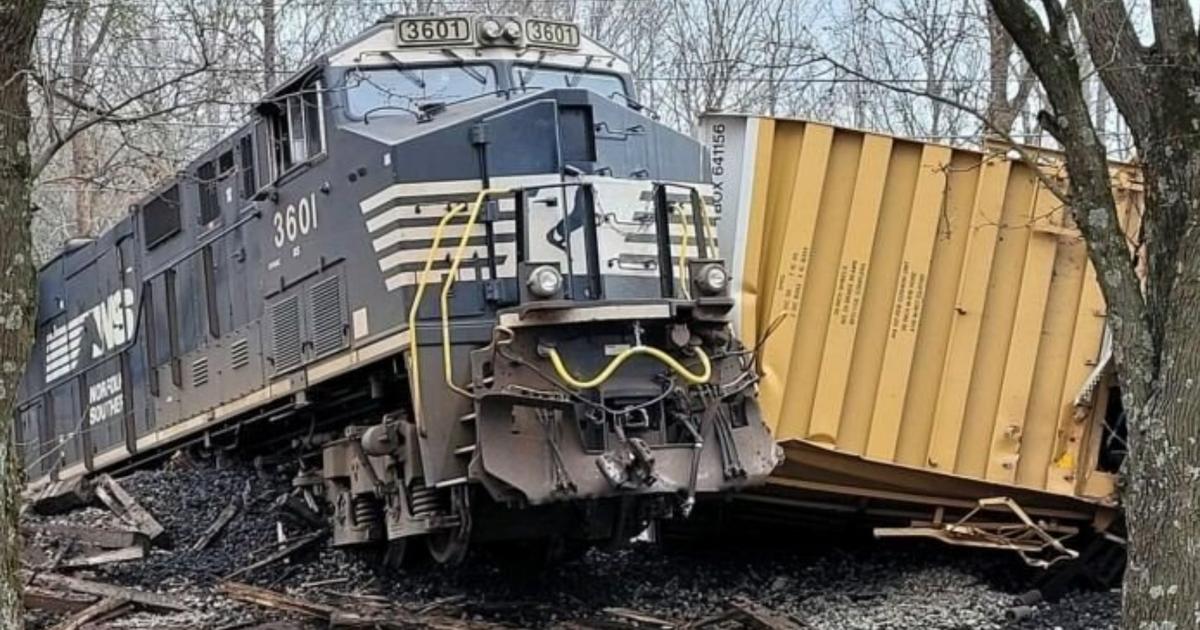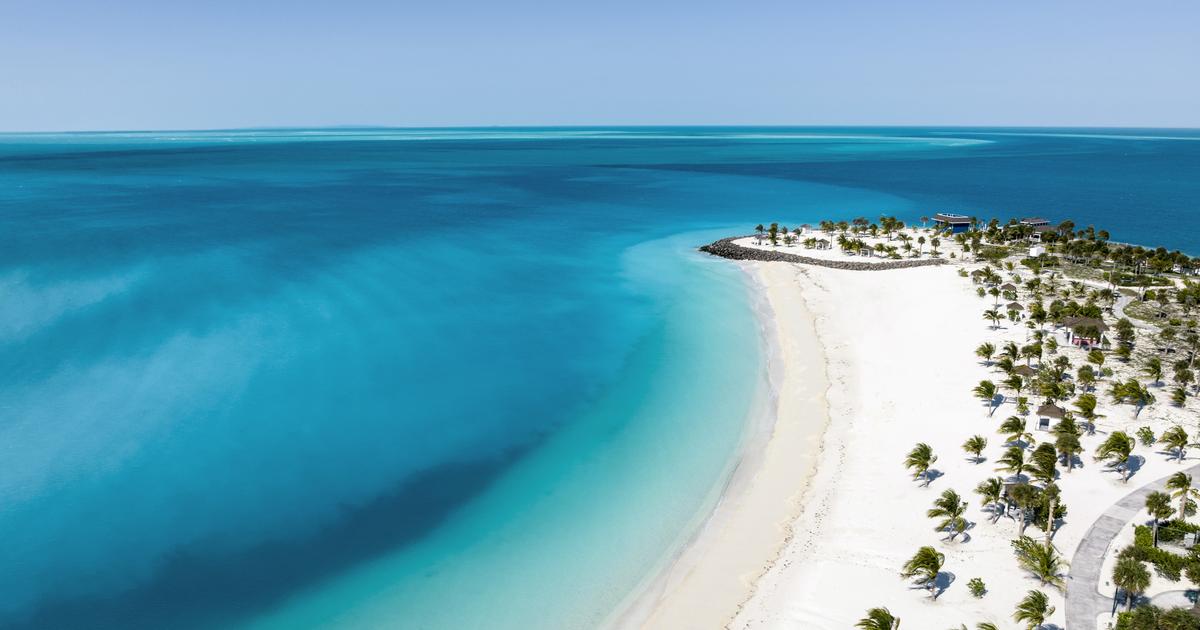285,000 customers are still without power in Puerto Rico after Hurricane Fiona 3:46
(CNN) --
Less than two weeks after Hurricane Fiona made landfall in Puerto Rico, causing an island-wide blackout affecting 1.5 million customers, power was restored to 84% of residents, authorities said.
Fiona hit the US mainland as a Category 1 tropical cyclone on September 18, bringing record rainfall, triggering mudslides, flooding neighborhoods and leaving most of the island without power or water.
The Puerto Rico health department indicated that at least 25 deaths are related to the hurricane.
Fiona made landfall almost exactly five years after Category 4 Hurricane Maria left many residents without power for months in 2017 and dealt a blow from which the island never fully recovered.
Power outages are a long-standing source of frustration for Puerto Ricans who rely on a fragile and poorly maintained power grid, with modernization efforts slow to take decades to materialize, and which was first run by a public entity and is now by a private company.
"The Whole Network Falls Apart"
The highly centralized network has a major power line that, if compromised, wrecks the entire system.
The grid suffers from a history of underinvestment and aging energy infrastructure, making it vulnerable to natural disasters and prone to extensive outages.
advertising
“Because the system has not been properly taken care of or modernized, we are in a position where every time a storm hits us or there is some kind of natural disaster, the entire network falls apart,” said López Varona, of the Center for Popular Democracy, a group that works on the recovery of Puerto Rico.
Fiona dragged entire houses into the sea, while devastating the Canadian coast 0:48
LUMA Energy, the Canadian-American electric company that is responsible for the distribution and transmission of energy on the island, assumed the administration of the network in 2021. It was handed over to the Puerto Rico Electric Power Authority, owned by the government. and also known as PREPA, which relied on fossil fuels for power generation.
LUMA, which signed a 15-year operation and maintenance agreement, has faced increasing criticism from activists and residents for high billing costs and widespread blackouts.
The government has also made calls to terminate his contract.
A history of challenges
PREPA, which is still in charge of power generation on the island, was created in 1941 as the only utility company.
It filed for bankruptcy in 2017 under Title III of the Puerto Rico Oversight, Administration and Economic Stability Act of 2016, which created a legal framework to restructure the US$74 billion debt for the US territory.
In September, mediations to restructure PREPA's US$9 billion debt with bondholders ended without an agreement.
Governor Pedro Pierluisi made his first public criticism of LUMA in August, saying he is "not satisfied" with its performance and must make changes to "significantly improve" its services.
The House Energy and Commerce Committee wrote to LUMA on September 27 expressing "deep concerns" about the power outages that followed Fiona.
He claimed that the company had not prepared the island's energy infrastructure to withstand a Category 1 hurricane.
“Continuing blackouts and total power outages following Hurricane Fiona heighten concerns that LUMA has failed to adequately develop and maintain critical electrical infrastructure for Puerto Rico despite its lucrative 15-year contract,” three leaders wrote. the commission to the president and CEO of LUMA Energy, Wayne Stensby.
In addition to LUMA's service being "plagued by interruptions and chronic power outages," the letter says, Puerto Ricans spend 8% of their income on electricity, compared to just 2.4% the average citizen spends on electricity. continental United States.
FEMA funds billions of dollars to modernize the network
In September 2020, the US Federal Emergency Management Agency (FEMA) dedicated more than $9.4 billion in funding for grid transformation projects, and more has been added since then funds, bringing the total to approximately $12 billion, representing the largest allocation of funds in the agency's history.
FEMA approved an additional $107.3 million in funding earlier this year to modernize the network after Maria, including 15 major projects to repair and restore the system.
Shay Bahramirad, senior vice president of Engineering, Asset Management and Capital Programs at LUMA, who is serving as incident command for the impact of Fiona, told CNN that "significant progress" has been made through the projects that They were funded by FEMA.
LUMA made improvements during the first year of its contract, such as improving the safety of its employees, reducing blackouts to 30% less than those during the PPREPA era, replacing more than 3,000 broken utility poles, and connecting more 25,000 customers to solar power on their roofs, according to a progress update released in June.
Bahramirad said poor system design, coupled with a lack of maintenance and management, has created "cascades of outages."
“There is a sense of urgency.
I completely understand our customers' frustration.
However, it is just as important to get this right," said Bahramirad, adding that it is critical that the system "is built on the foundation of sound data science and engineering to industry standards."
The network suffers from a long history of mismanagement
Hurricane Maria generated an "overview of the needs to reform the energy system," said Alejandro Figueroa, director of infrastructure for the Puerto Rico Financial Oversight and Management Board, which was established under the oversight legislation in 2016. Previously he had served as general counsel for the Puerto Rico Energy Office, the island's energy regulator.
The board was created to restructure PREPA's debt, putting it on the path to fiscal stability and overseeing efforts to strengthen the system.
Figuroa pointed out two key causes of the system's problems: a revolving door in the administration of the public entity, which, according to him, “imitated political cycles”, since the new governors brought in new administrators;
and PREPA rates, which remained unchanged for nearly two decades.
He explained that as inflation and recessions increased the cost of materials and labor, and the island's population decreased, the company could not keep up with maintenance, office operations, or its debt, and the system was ready for disaster when Maria arrived.
With the restructuring, power distribution, transmission and maintenance moved to LUMA, a private operator, a move many activists have criticized, arguing that it has only worsened reliability in the system.
“Why are there so many blackouts?
Mainly, it is due to the lack of investment in the system”, said Figuroa.
“There are frequent equipment failures, you have a maintenance program that reacts to an outage and tries to fix it as quickly as possible rather than proactively identifying a weak point in the system and repairing it appropriately to reduce the chance of an outage with time".
In addition, Figuroa pointed out, the lack of investment by PREPA to maintain its distribution and transmission lines has made the system especially vulnerable to collisions with trees and other aspects related to the ecosystem of the tropical island.
“If you have a wooden pole instead of an aluminum pole, when a hurricane hits, the pole is more likely to fall and therefore cause longer blackouts than if you had hardened the system,” he said.
Since LUMA took over in 2021, blackouts have occurred less frequently than under PREPA, but are longer by an average of 30 minutes, Figuroa noted, albeit with a caveat: the island's power regulator concluded that PREPA did not correctly reported their numbers between 2019 and 2020.
“Many people feel frustrated because they perceive that the service provided today has not improved or, in some cases, they perceive that it is getting worse.
But a lot of that has to do with the amount of investment and work it takes to fix and improve one of the largest and most complex power systems in the United States,” Figuroa said.
The process "will inevitably take time," he added, for clients to feel a significant improvement in the quality of services LUMA provides.
Activists call for transition to solar power
Varona of the Center for Popular Democracy said her organization believes LUMA's contract should be canceled as it "has not been an effective administrator of the network."
The group criticized the Financial Oversight and Management Board for using “its power to impose devastating austerity measures and negotiate unsustainable debt restructuring plans that enrich Wall Street and hurt Puerto Ricans,” according to a report published last year.
There must be real investments not only to modernize the grid, but also to decentralize it and replace it with a renewable energy system, Varona added, extending calls from activists and many residents to use FEMA funds for a transition to solar power.
The Quiero Sol coalition has proposed a plan to be adopted by the government of Puerto Rico to transform the grid with the goal of achieving 50% renewable energy generation by 2035 and 100% by 2050.
The proposal provides a path to a self-sufficient system based on renewable resources, primarily solar energy, "through the use of clean renewable technologies and inclusive structures and processes aimed at eliminating partisan political interference and systemic corruption."
“We need to make sure that the dollars that were allocated to rebuild the power grid move faster so that we can rebuild the grid,” Varona said.
"And hopefully, when we do, we'll rebuild it through a decentralized system that relies more on the biggest source of energy Puerto Rico has: 365 days of sunshine."
BlackoutsHurricane Fiona

